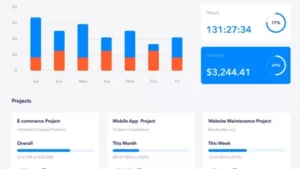Organisations should talk about health of employees generally, not try to distinguish between physical and mental health, according to a leading specialist in occupational medicine.
Dr David Batman, a Science Advisory Board Member of Virgin Pulse, discussed trends in the management of occupational health at a recent seminar in Sydney on 22 February 2019.
What trends are evolving?
Dr Batman said that the global financial downturn of about a decade ago began a change in the nature of his employee consultations. About 80% can now be categorised as mental health-related and 20% physical – the reverse of 10 years ago. This is mainly because people have become far more open and less judgmental about mental health.
About 70% of the factors contributing to mental health problems are lifestyle-related, but the two fundamental causes are uncertainty and lack of trust. Those causes apply to all generations, although the social issues and stressors vary between them.
A particular trend is that dementia is becoming more common at earlier ages, eg 50s, and lifestyle is the main cause of it.
Stress v anxiety v depression
Stress can be defined as an emotion or feeling, and is a combination of anxiety and depression.
For most people, the first symptom is a change in sleep patterns. If it becomes hard to sleep, fatigue sets in and then causes other problems. Then fear of not sleeping takes over and compounds the problems. A person with depression is likely to go to sleep initially but wake up after only a few hours.
That said, “stress” is something of a buzzword, and is not always a bad thing. Employees may feel stressed if they encounter new or high-pressure situations, but if it helps them rise to the occasion it becomes a positive emotion.
Initial steps to take
Dr Batman said that most people seek a quick fix, such as tablets or a consultation with Dr Google. The long-term solution, however, is behavioural change, but this can be a hard sell versus anti-depressants.
As noted above, about 70% of health risks are lifestyle-related, so he recommended the following initial steps:
Ask a very simple “how are you” (nothing else at this stage) to initiate a conversation.
Ask employees to check their sleep patterns. There are about 70 different types of sleep disorder.
Good nutrition has a significant preventative impact. Suggest they evaluate their eating habits.
Suggest they obtain good walking shoes and an iPod, and walk and listen to music. Look upwards, not down, when walking.
Dr Batman’s first question to patients is: ‘when did you last feel well?’ A typical answer is nine to 24 months ago, by which time job performance problems are evident and symptoms have increased and become more serious. This indicates that the stigma of disclosure of mental ill health still exists.
What should HR do?
Dr Batman had the following advice for HR practitioners:
An organisation culture that “health matters” is crucial. Talk about “health”, not “physical health” and “mental health”.
A supportive health culture has to come from the top down. However, accept that health issues are here to stay. Uncertainty and lack of trust will always exist to some extent, even if actions can reduce them. This point is discussed further below.
Don’t just implement a “health program”. Identify and address causal factors at the workplace first, such as workloads, management style, bullying, harassment and ethical issues.
Ask yourself how you would want people to deal with you in the same situation.
When approaching employees, do it in private. Keep the discussions simple, but open and honest. Talk face-to-face, not via email or phone.Accept that you and others are all vulnerable.
Everyone needs “stress management”, not just targeted individuals or groups. Program components should include resilience and mindfulness training. Availability of referral to an Employee Assistance Program is also recommended.
Never say: “there’s nothing I can do”. Listen to and support employees. Encourage them to face their fears instead of avoiding them. Time off work may be necessary but it is mainly an avoidance strategy, and the longer someone is off work, the less chance they have of a successful return. Employees are often scared of how others will react when they return to work. Suggest they can say: “Thank you, I was unwell, I’m better now, how are you?”
It helps to understand also that health problems will be inevitable. Personal problems (eg relationships, financial) cannot simply be left at home and separated from work. Finding consistent scientific evidence about many issues is often difficult – for example, there are regular conflicting media reports about whether something basic like drinking coffee is good or bad for us. And even when the evidence is overwhelming, eg against smoking, there are still people who will do it.
Management often tries to distinguish whether health problems are caused by work or personal outside-work problems, perhaps due to pressure to establish legal liability. Apart from the legal duty of care to protect the health and safety of employees at work, it is in the interests of better organisation performance to look after employees in a proactive way and understand and help when they appear to be struggling.
Further information: The event was organised by Phil Hazlett, client success manager at Virgin Pulse.
This article was written by Mike Toten and first published on hradvanceprofessional.com.au


